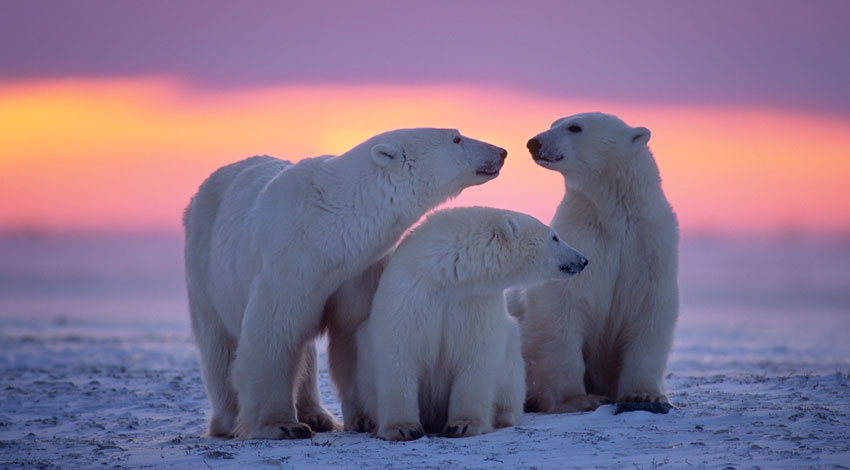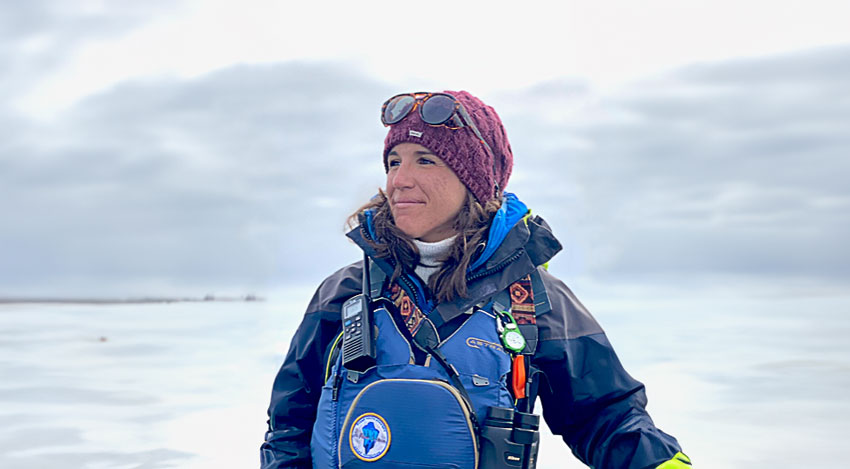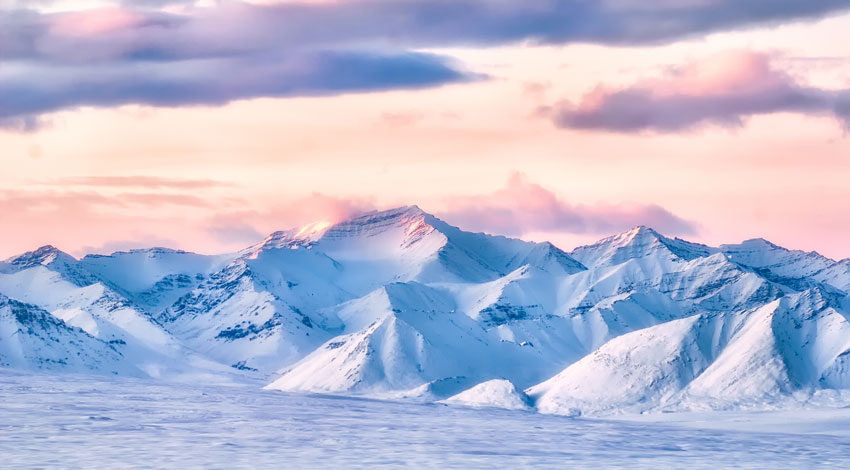Polar Bears & The Arctic: A Q&A With Marine Biologist Amanda Hunter
You may have met Amanda Hunter before — in addition to her work as a marine biologist and polar expedition guide, Amanda is a Road Scholar expert leading online lectures about Arctic animals and ecosystems! Amanda’s passion for the ocean, wildlife, conservation and her international experience led to her work, and she is also one of the proud founders of Ocean Youth Academy, a non-profit organization dedicated to connecting youth to our planet’s oceans.
Amanda answered some of our most pressing questions about polar bears, their habitat and how we all can learn more about the Arctic.

What roles do polar bears play in the Arctic ecosystem?
Amanda: Polar bears are apex predators, meaning they are at the top of their food chain and play a vital role in maintaining the balance within the Arctic ecosystem. They feed primarily on seals, and as they hunt and feed, they not only manage population dynamics, but they recycle nutrients for other Arctic animals like the foxes, birds and various other scavengers to utilize. Polar bears are also considered an indicator species, meaning that their presence and well-being reflects the health of the Arctic ecosystem as a whole. Their survival rate is closely linked to the presence of sea ice. So in a season when there is less sea ice, we would expect to see fewer polar bears.
What have your experiences been with interacting with polar bears?
Amanda: While working as a naturalist and guide in the Arctic, we are always looking for wildlife, especially polar bears. I work onboard expedition vessels, which is the best place to see the bears (versus hiking on land) because we are safe. Polar bears are opportunistic hunters, so if a person were to encounter one while on foot on land, it could end up being a very dangerous situation. As a guide, we do our best to scout the land before bringing our group to visit an area, and thankfully I have never encountered a polar bear face-to-face on land. However, I have had plenty of encounters while driving a Zodiac and from the expedition ship. To see these incredible animals in their natural habitats are experiences that I will hold onto for the rest of my life.

What are some fun facts about polar bears and the Arctic that not everyone might know?
Amanda: Polar bears don't hibernate, they have black skin and clear fur, their paws are the size of dinner plates and they are incredible swimmers! (Some polar bears have been documented swimming for over 10 days in open water!) The cubs they give birth to are extremely small (about the size of a fist), and these cubs grow and gain weight within the first few months of their lives inside a den in the ice that the mom has made for them.
What drew you to study Arctic ecosystems?
Amanda: I started my polar guiding career in the Antarctic, with a goal to work with my favorite animal on earth: penguins. After a full season of guiding down south, it was only natural to spend the other half of the year chasing polar summers up north in the Arctic. My first season in Svalbard, a Norwegian archipelago north of the Arctic Circle, I had no idea what I was getting myself into. After a few weeks, it was easy to fall in love with the place and I knew I was hooked. From there I was able to guide in Greenland and Iceland as well, both of which are so incredible and different from one another and quite a contrast to the Antarctic.

Are there any specific resources (books, documentaries, etc.) that you might direct people to if they want to learn more about polar bears and the Arctic?
Amanda: Absolutely!
Some books include:
- "Polar Bears: A Complete Guide to Their Biology and Behavior" by Andrew E. Derocher. This book provides comprehensive information on polar bears, drawing on the latest scientific research to cover their biology, behavior and the threats they face.
- "The Last Polar Bear: Facing the Truth of a Warming World" by Steven Kazlowski. Featuring stunning photography, this book combines visual impact with essays from various experts to explore the lives of polar bears amidst the changing Arctic environment.
- "Ice Bear: The Cultural History of an Arctic Icon" by Michael Engelhard. Engelhard's book delves into the cultural significance of polar bears, tracing their representation in art, literature and folklore, and examining their role in the human imagination over centuries.
Documentaries include:
- "Polar Bear: Spy on the Ice" (BBC): This documentary employs spy cameras to offer a unique glimpse into the daily lives and challenges of polar bears in the Arctic, providing intimate insights into their behavior.
- "The Last Ice" (National Geographic): Focusing on the Inuit communities of the Arctic and their relationship with the ice that dominates their landscape, this documentary explores the cultural and environmental changes brought about by the melting of the Arctic ice.
- "Arctic Tale" (National Geographic): Narrated by Queen Latifah, this film follows the life of a polar bear cub and a walrus pup as they navigate the changing Arctic world, offering a poignant look at the impacts of climate change on these species.
Other resources include:
- "Frozen Planet" (BBC): Although not exclusively about polar bears, this series provides a comprehensive overview of life in the Arctic and Antarctic, with stunning visuals and informative commentary on the ecosystems that polar bears inhabit.
- Polar Bears International: A leading organization dedicated to polar bear conservation, whose website offers a wealth of information, including research updates, educational resources and ways to get involved in conservation efforts.
- Ocean Youth Academy’s Polar Oceans Course for kids! Reach out to info@oceanyouthacademy for more information.
Learn more from Amanda on one of her online lectures, and discover even more about polar bears on our learning adventures in the Arctic and At Home!
